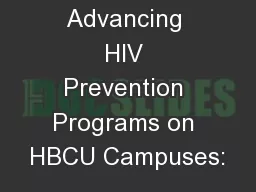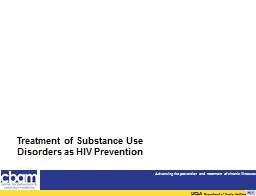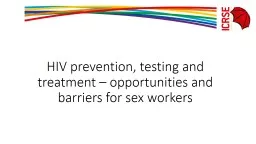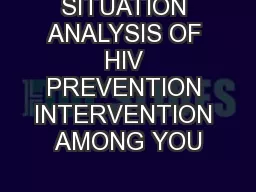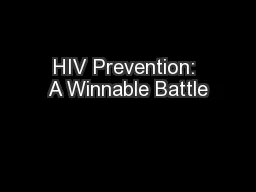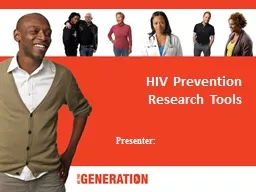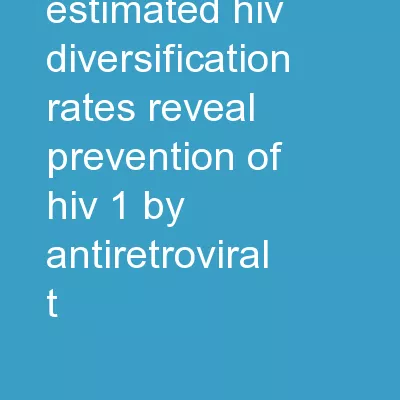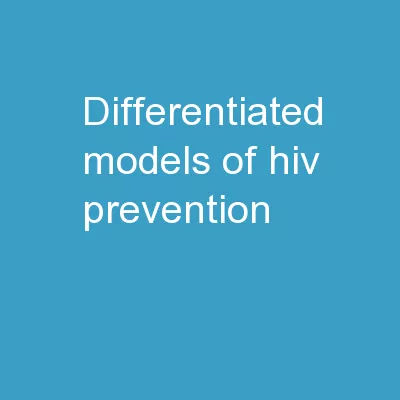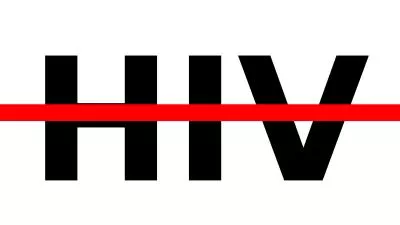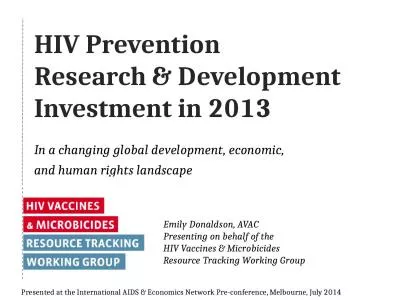PPT-Advancing HIV Prevention Programs on HBCU Campuses:
Author : stefany-barnette | Published Date : 2018-09-19
Leveraging Programs Policies and Partnerships PRESENTORS JACKSON STATE UNIVERSITY Ollie Harper RNC WHCNP MPPA Victoria Coleman HIV Coordinator France White
Presentation Embed Code
Download Presentation
Download Presentation The PPT/PDF document "Advancing HIV Prevention Programs on HBC..." is the property of its rightful owner. Permission is granted to download and print the materials on this website for personal, non-commercial use only, and to display it on your personal computer provided you do not modify the materials and that you retain all copyright notices contained in the materials. By downloading content from our website, you accept the terms of this agreement.
Advancing HIV Prevention Programs on HBCU Campuses:: Transcript
Download Rules Of Document
"Advancing HIV Prevention Programs on HBCU Campuses:"The content belongs to its owner. You may download and print it for personal use, without modification, and keep all copyright notices. By downloading, you agree to these terms.
Related Documents

